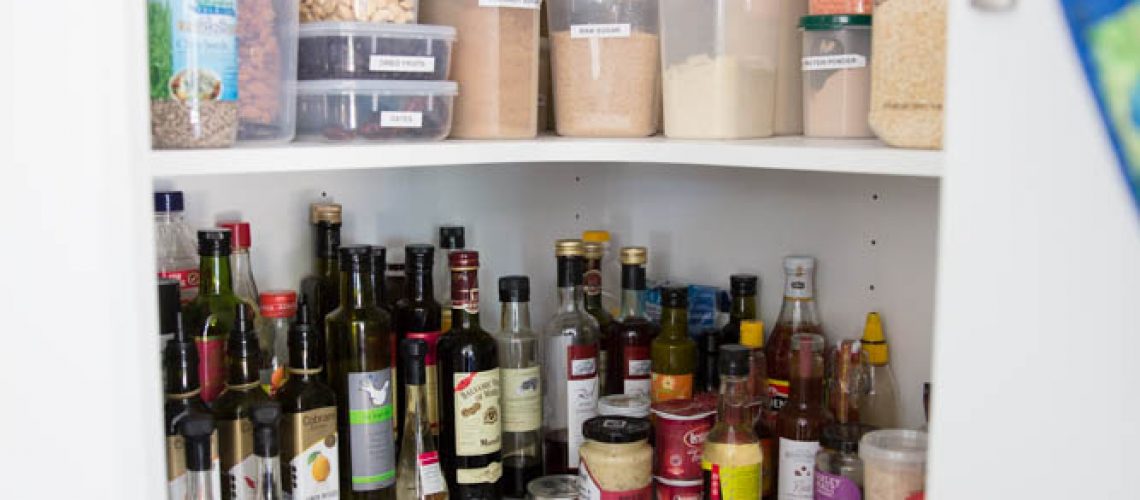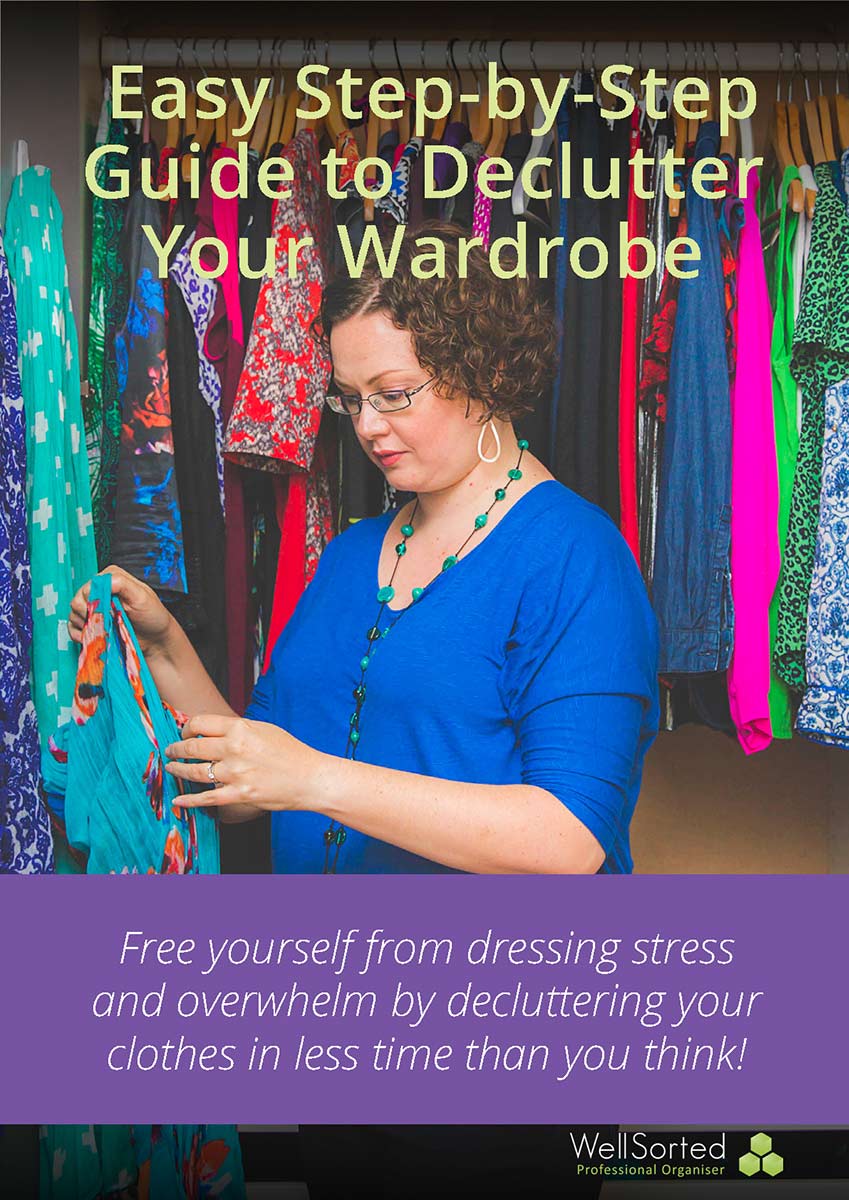I have given tips previously for organising a kitchen. I sometimes get asked for specific tips on how to organise a pantry, especially a small one. There are heaps of hacks depending on the size of the pantry, the types of food you have, and the size of your shelves. I must say, I reckon I’m very good at this, as I have only two shelves of pantry space, so I’ve learnt to live with less. The suggestions however are typical hacks I find useful and work in almost all pantries. My tips are:
Organise a Pantry Hacks
1. Have stackable containers
It might be obvious to some, but having containers that stack well on each other, for your packeted food items like pasta, rice, flours, baking ingredients and so on is a god send to organise a pantry. Stackable containers mean you can use the full height of the shelf, see what you have, and fit more in. Of course, labels are important so you can see what’s in each container. It doesn’t really matter which containers you choose to use. I just recommend choosing a brand that you know has been around for a while so. Examples are: at Coles and Woollies, they sell Sistema and Décor containers which are very common brands that have consistently been around over the years that stack together. If you can afford it, Tupperware is great. Big W have a good range too, for a fraction of the price.
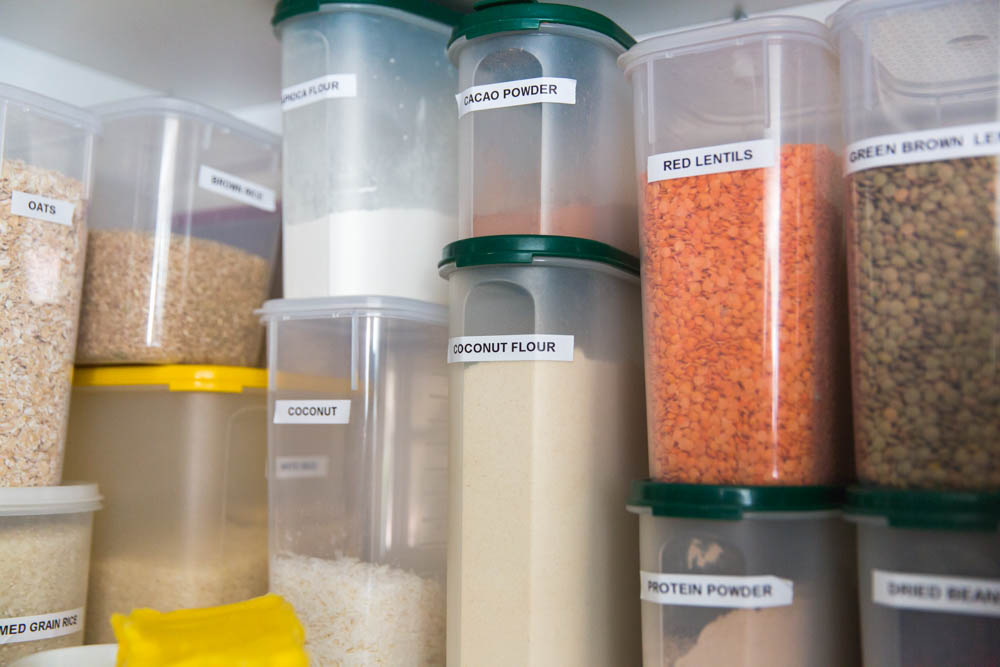
If you prefer glass, you’re better off getting square or round jars that are sturdy and can stack, rather than large round jars. You’ll also want a range that allows different sizes as you may only have a small amount of cocoa but need a jar for 1kg of rice. General household jars from your groceries are a great way to reuse – they just don’t stack well in a small pantry shelf so are not great for organsing a pantry unless it has shallow drawers. Otherwise you might be picking glass off the floor if you drop something!
Let me know if you come across a good range of glass pantry (stackable) storage!
2. Labelling
A simple one, but a must have. Labels will be essential on your containers to keep your pantry organised. If they’re in a drawer, label the lid so you don’t have to lift everything up to find it what you’re looking for.

3. Store items within eye to waist height
Things you use most often should be within eye to waist height (if your pantry allows for this). If not, then try to get them as close to that area as possible with the shelves you’ve got. Those ingredients used most often, go to the front of these shelves, and those used less often should be at the back of the pantry or at the very top (or the very bottom of your pantry). Ideally this is for the person accessing it, so if you have kids, their items should be at their eye to waist height.
4. Baskets or large containers for ‘like items’
Using baskets to group items is great to organise a pantry but are very useful for small ones particularly. Smallish, to medium sized containers/baskets work well here. Large ones, really only work best for light things like chip packets (or if you can store it low on a shelf and slide it out easily). Consider your safety when storing things in baskets to pull out from above your head! No injuries needed thanks! Two-dollar shops always have a variety of these types of containers, some with handles on the front. IKEA has a great range I love for sauces and spices. Big W and Kmart often have a great range too.
Just like containers, if you want to be able to get the same type of thing, try to choose a brand that you know will be around long term. Otherwise you end up with a bunch of different containers. Woolworths and Coles also sell some great plastic baskets that suit pantries.
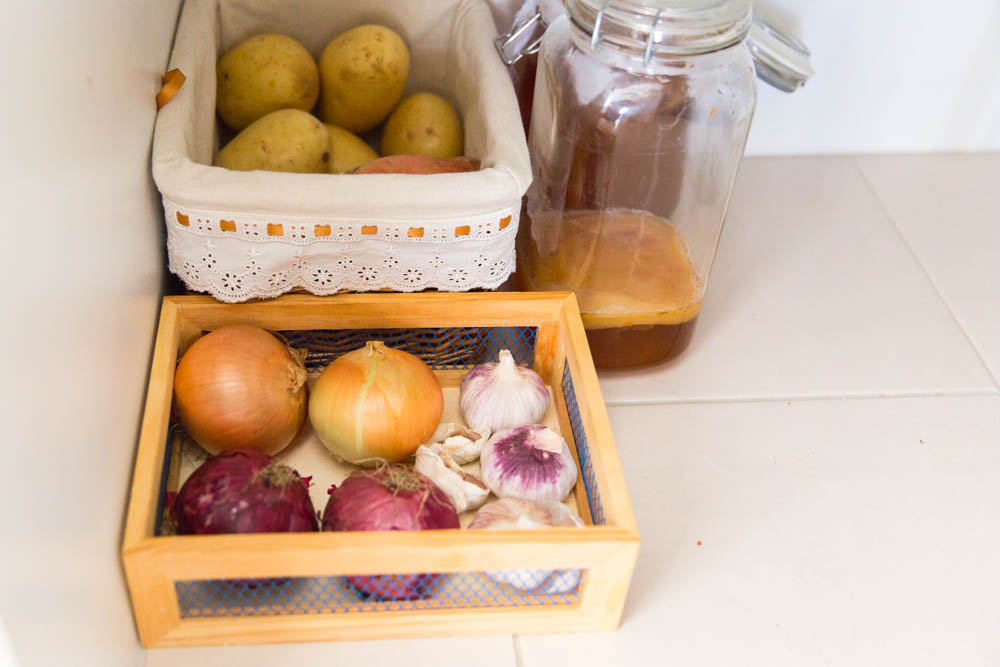
Regardless of what you use, the most important thing is to be aware of the shape and size you need. What would you typically have in this category? Eg: Oils. Do you have all the oils you would usually use? Or do you need to replace the Olive Oil that ran out last week? Knowing what will be in that tub of oils will dictate what size container you get, or if you need to break the category down even more. Eg. Vegetable oils, and other oils. The other aspect of these baskets of grouped items, is to measure the shelf they are going onto as well. There’s no point choosing the cutest container and then it not fitting on your shelf. The pantry needs to be practical (particularly if it’s tiny), so go for useful, practical containers, over nice-looking ones. If you can find one that is both, fantastic.
5. Tiered shelving and lazy Susans and more – oh my!
Tiered shelves for cans and sauces are great to allow you to see the items behind the others (instead of them all being at the same eye level). These can sometimes be bought from Bunnings, two-dollar shops and Big W. I’ve always been able to find them at Howard Storage World and have been happy with the quality of these.
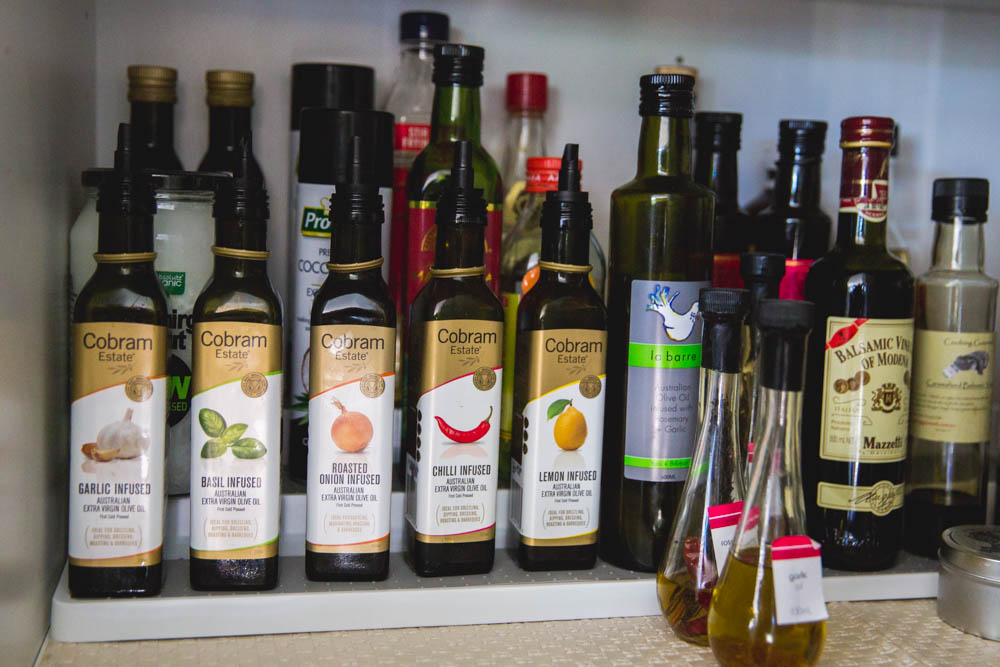
Lazy Susans can be useful in some pantries to make things more accessible. Depending on your pantry shape and the types of items you store on them (or around them), they can actually be a bit of a pain as they can either get stuck because of the items around them, or knock things over when you turn them.
You can by shelf inserts to organise a pantry too, I personally haven’t had much joy with these in my years, but you might.
All of these suggestions are great to just play with and figure out what works for your pantry. What works in one, will not necessarily work in another. And what works for one family, doesn’t work for another.
6. Grouping Foods
Regardless of the storage solutions you choose, some other standard tips that will keep your little pantry organised is to group like items with like items. So organise the pantry with all of your spices together. All of your oils together. Your vinegars together. Different types of flours together. That type of thing.
If you’re going to use baskets to group the like items together then you could consider how you use these items. For instance, like the groupings listed above, or by cuisine. An example of the cuisine variety, it might be the spices, oils and vinegars grouped by Indian cuisine, Asian cuisine, European cuisine. Just have a think through how you use the items in your pantry. If you’re always pulling the same five items out to make smoothies for instance, then maybe a container for smoothie making is needed. Some common groupings could be baking items, cake decorating items, cereals, carbohydrates. Whatever it is for your household, that’s fine. Take a bit of time to think about it, and then group these items together.
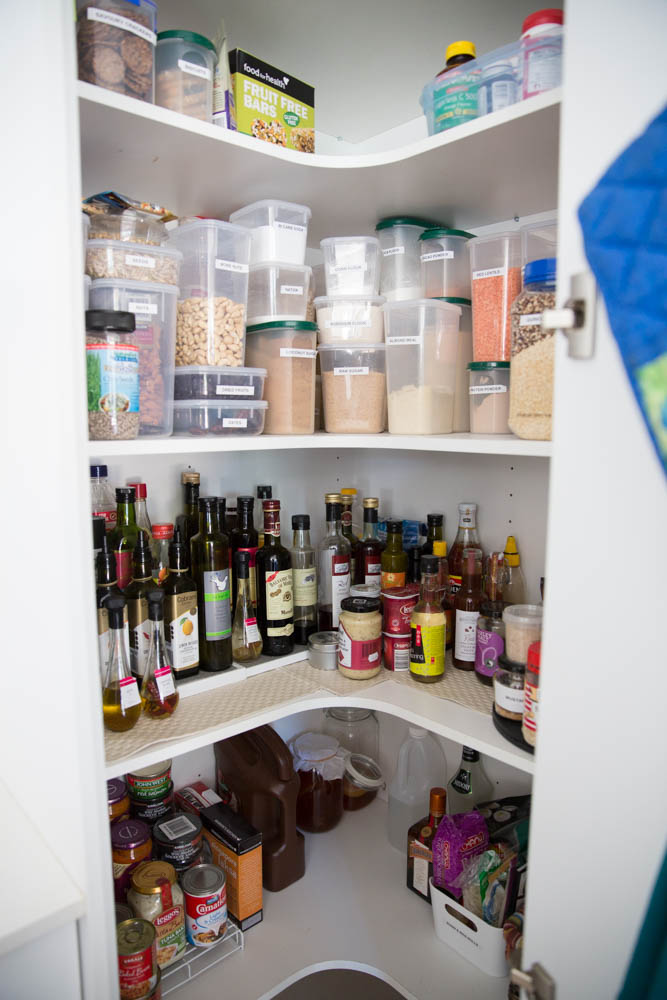
7. Shopping Habits
Not so much a tip for organising a pantry but helpful for keeping a small pantry manageable is your shopping habits. Realistically if you have a small pantry, you’ll be shopping more regularly than most and you can’t really benefit in buying in bulk (unless you have another area you can store the excess stock). If you do buy in bulk and you need a storage solution for this, then I would suggest having another area in the house dedicated to the overflow or extra items. Typical places people store bulk items, are in the garage, in the laundry, or in the hallway cupboard. It depends on your house and where these cupboards are located. The area that’s closest usually wins out.
The other thing that can be useful for a small pantry is to be very good at menu planning as this helps you to only have what you need in the pantry at any given time. Lastly, doing a regular cull of what’s in there and trying to use up what’s in the pantry before purchasing more products will make it more manageable.
Share your hot tips on organising a pantry on the WellSorted Facebook page.

